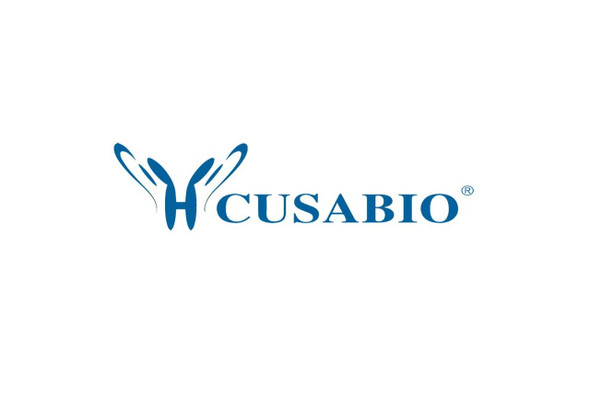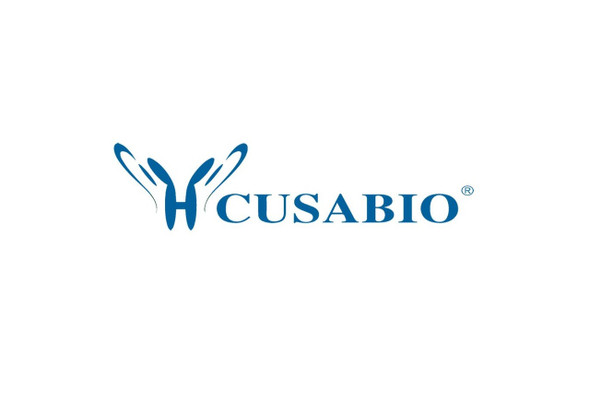Cusabio Human Recombinants
Recombinant Human Oxysterols receptor LXR-alpha (NR1H3) | CSB-EP619753HU
- SKU:
- CSB-EP619753HU
- Availability:
- 13 - 23 Working Days
Description
Recombinant Human Oxysterols receptor LXR-alpha (NR1H3) | CSB-EP619753HU | Cusabio
Alternative Name(s): Liver X receptor alphaNuclear receptor subfamily 1 group H member 3
Gene Names: NR1H3
Research Areas: Transcription
Organism: Homo sapiens (Human)
AA Sequence: MPHSAGGTAGVGLEAAEPTALLTRAEPPSEPTEIRPQKRKKGPAPKMLGNELCSVCGDKASGFHYNVLSCEGCKGFFRRSVIKGAHYICHSGGHCPMDTYMRRKCQECRLRKCRQAGMREECVLSEEQIRLKKLKRQEEEQAHATSLPPRASSPPQILPQLSPEQLGMIEKLVAAQQQCNRRSFSDRLRVTPWPMAPDPHSREARQQRFAHFTELAIVSVQEIVDFAKQLPGFLQLSREDQIALLKTSAIEVMLLETSRRYNPGSESITFLKDFSYNREDFAKAGLQVEFINPIFEFSRAMNELQLNDAEFALLIAISIFSADRPNVQDQLQVERLQHTYVEALHAYVSIHHPHDRLMFPRMLMKLVSLRTLSSVHSEQVFALRLQDKKLPPLLSEIWDVHE
Source: E.coli
Tag Info: N-terminal 6xHis-SUMO-tagged
Expression Region: 1-402aa
Sequence Info: Full Length of Isoform 3
MW: 61.7 kDa
Purity: Greater than 90% as determined by SDS-PAGE.
Relevance: Nuclear receptor. Interaction with RXR shifts RXR from its role as a silent DNA-binding partner to an active ligand-binding subunit in mediating retinoid responses through target genes defined by LXRES. LXRES are DR4-type response elents characterized by direct repeats of two similar hexanuclotide half-sites spaced by four nucleotides. Plays an important role in the regulation of cholesterol homeostasis, regulating cholesterol uptake through MYLIP-dependent ubiquitination of LDLR, VLDLR and LRP8. Interplays functionally with RORA for the regulation of genes involved in liver metabolism .
Reference: Human chromosome 11 DNA sequence and analysis including novel gene identification.Taylor T.D., Noguchi H., Totoki Y., Toyoda A., Kuroki Y., Dewar K., Lloyd C., Itoh T., Takeda T., Kim D.-W., She X., Barlow K.F., Bloom T., Bruford E., Chang J.L., Cuomo C.A., Eichler E., FitzGerald M.G. , Jaffe D.B., LaButti K., Nicol R., Park H.-S., Seaman C., Sougnez C., Yang X., Zimmer A.R., Zody M.C., Birren B.W., Nusbaum C., Fujiyama A., Hattori M., Rogers J., Lander E.S., Sakaki Y.Nature 440:497-500(2006)
Storage: The shelf life is related to many factors, storage state, buffer ingredients, storage temperature and the stability of the protein itself. Generally, the shelf life of liquid form is 6 months at -20?/-80?. The shelf life of lyophilized form is 12 months at -20?/-80?.
Notes: Repeated freezing and thawing is not recommended. Store working aliquots at 4? for up to one week.
Function: Nuclear receptor. Interaction with RXR shifts RXR from its role as a silent DNA-binding partner to an active ligand-binding subunit in mediating retinoid responses through target genes defined by LXRES. LXRES are DR4-type response elements characterized by direct repeats of two similar hexanuclotide half-sites spaced by four nucleotides. Plays an important role in the regulation of cholesterol homeostasis, regulating cholesterol uptake through MYLIP-dependent ubiquitination of LDLR, VLDLR and LRP8. Interplays functionally with RORA for the regulation of genes involved in liver metabolism (By similarity). Exhibits a ligand-dependent transcriptional activation activity
Involvement in disease:
Subcellular Location: Nucleus
Protein Families: Nuclear hormone receptor family, NR1 subfamily
Tissue Specificity: Visceral organs specific expression. Strong expression was found in liver, kidney and intestine followed by spleen and to a lesser extent the adrenals.
Paythway: PPARsignalingpathway
Form: Liquid or Lyophilized powder
Buffer: If the delivery form is liquid, the default storage buffer is Tris/PBS-based buffer, 5%-50% glycerol. If the delivery form is lyophilized powder, the buffer before lyophilization is Tris/PBS-based buffer, 6% Trehalose, pH 8.0.
Reconstitution: We recommend that this vial be briefly centrifuged prior to opening to bring the contents to the bottom. Please reconstitute protein in deionized sterile water to a concentration of 0.1-1.0 mg/mL.We recommend to add 5-50% of glycerol (final concentration) and aliquot for long-term storage at -20?/-80?. Our default final concentration of glycerol is 50%. Customers could use it as reference.
Uniprot ID: Q13133
HGNC Database Link: HGNC
UniGene Database Link: UniGene
KEGG Database Link: KEGG
STRING Database Link: STRING
OMIM Database Link: OMIM









